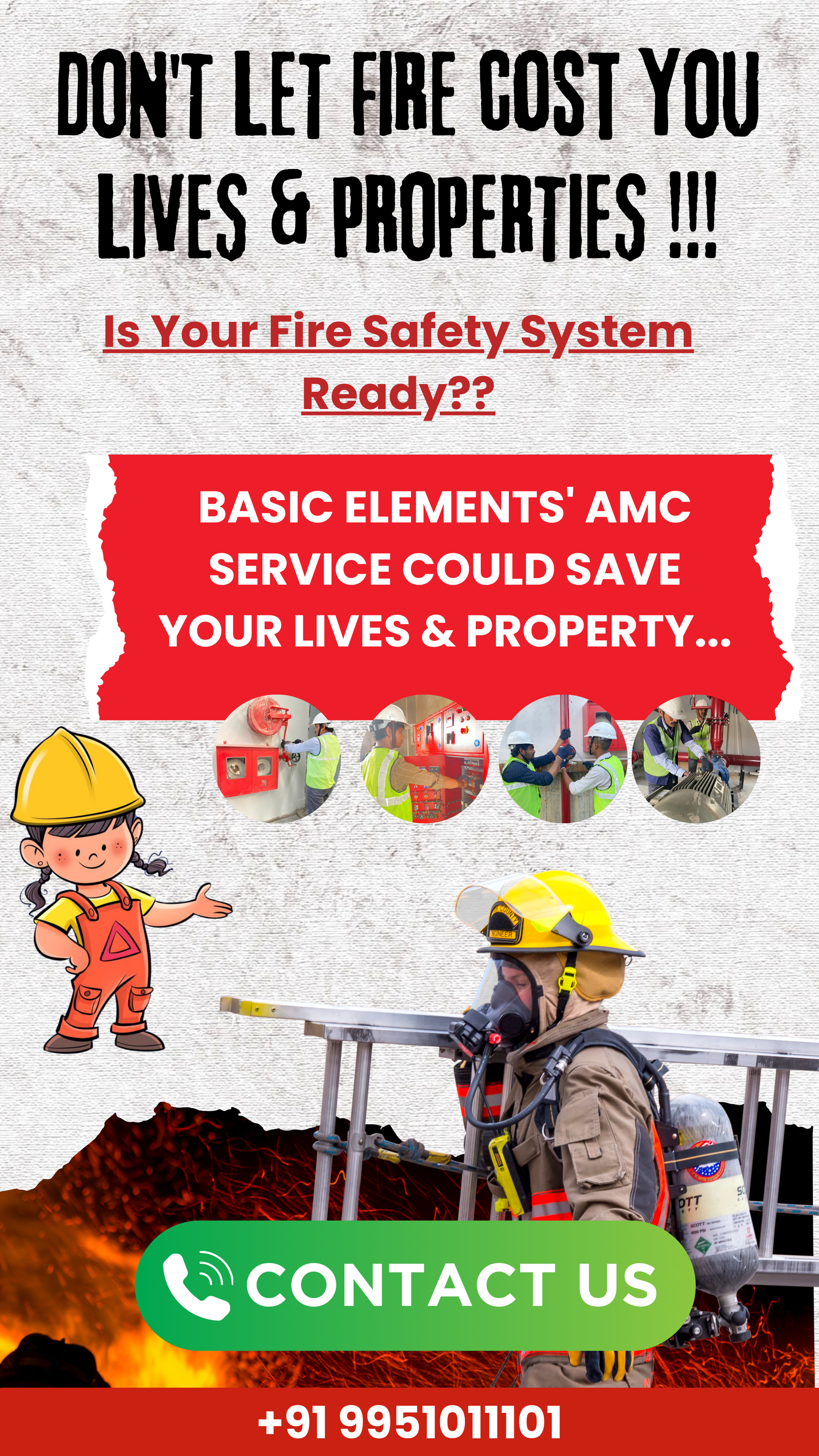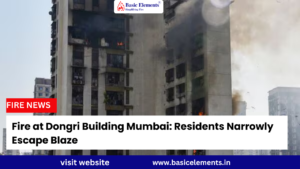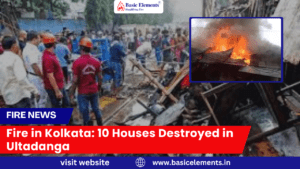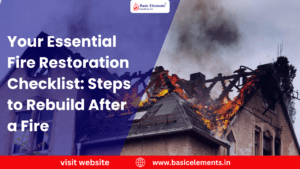In India, fire safety is a top priority. The rules for fire extinguishers are key to protecting lives and property. This guide covers the main rules for using, maintaining, and installing fire extinguishers in the country.

Key Takeaways
- India has specific regulations for the types of fire extinguishers permitted, including water-based and dry chemical extinguishers.
- Legal requirements for fire extinguisher installation, including placement, accessibility, and signage, must be met.
- Regular inspection and maintenance protocols, including refilling and servicing, are mandatory to ensure proper functionality.
- Penalties can be imposed for non-compliance with fire extinguisher regulations, underscoring the importance of adherence.
- Recent updates to the regulations, such as changes in inspection frequency, highlight the evolving nature of fire safety guidelines in India.
Introduction to Fire Extinguisher Regulations in India
India has set up strict fire extinguisher rules to boost fire safety. These rules help protect lives and property in emergencies. They make sure fire extinguishers are correctly installed and kept up in buildings everywhere.
The fire extinguisher laws India are key to the country’s fire safety standards India and fire prevention regulations India. They detail what fire extinguishers are needed, where they should be, and how to keep them in good shape. This helps make a safer place for everyone.
Some important points in these rules include:
- Approved types of fire extinguishers in India
- Rules for where and how many fire extinguishers must be installed
- How often and how to check and maintain fire extinguishers
- Training and certification for using fire extinguishers
- Rules for signs and labels on fire safety gear
- Penalties for not following the rules
By following these fire extinguisher laws India, the government wants to lower fire risks. It aims to keep people and their property safe.
“Effective fire safety measures, including the proper use and maintenance of fire extinguishers, are crucial for protecting lives and assets in the event of a fire emergency.”
The fire safety standards India and fire prevention regulations India are very important. They help make a safer place for everyone. By following these rules, businesses and homes can be ready for fires. This can prevent big problems.
Types of Fire Extinguishers Covered Under Indian Regulations
In India, there are many types of fire extinguishers. Each one is made to fight different kinds of fires. You’ll find water-based and dry chemical extinguishers in homes and businesses.
Water-Based Fire Extinguishers
Water-based extinguishers are very common in India. They’re great for fighting Class A fires. These fires include things like wood, paper, and cloth. They cool the fire and cut off oxygen.
Dry Chemical Fire Extinguishers
Dry chemical extinguishers are also widely used. They can handle Class B and Class C fires. These fires involve flammable liquids and gases, and electrical equipment. They stop the fire’s chemical reaction.
Both water-based and dry chemical extinguishers are key for fire safety in India. Knowing how to use them is important for protecting against fires. They are a first line of defense in homes and businesses.
Legal Requirements for Fire Extinguisher Installation
In India, there are strict rules for installing fire extinguishers. These rules make sure fire safety gear is in the right place and easy to get to when needed.
The fire prevention laws India say how many and where fire extinguishers go. This depends on a building’s size and how many people are in it. It helps people find the fire safety gear they need quickly.
The fire extinguisher placement requirements India say they must be seen and not blocked. They should be no more than 15 meters from anywhere in the building. Also, the fire safety equipment placement India rules say they must be on walls or stands. The top of the extinguisher should be no higher than 1.5 meters from the ground.
Also Read : The Essential Fire Detection and Alarm System Preventive Maintenance Checklist
| Building Type | Minimum Fire Extinguisher Requirements |
|---|---|
| Residential | At least one 2 kg dry chemical powder fire extinguisher per floor |
| Commercial | At least one 4 kg dry chemical powder fire extinguisher per 300 square meters of floor area |
| Industrial | At least one 6 kg CO2 fire extinguisher per 1,000 square meters of floor area |
Following these fire extinguisher placement requirements India and fire safety equipment placement India rules is key. It keeps people safe and follows the law.
Inspection and Maintenance Protocols
Keeping fire extinguishers in good shape is key for fire safety. In India, fire safety rules say we must check and maintain these tools regularly. This keeps them ready to work when needed.
Periodic Inspection Guidelines
Fire extinguishers need regular checks to make sure they’re ready. The rules say fire extinguisher maintenance in India should happen at set times:
- Every month, a quick look to spot damage, check pressure, and ensure signs are up
- Once a year, a certified expert does a full check, including inside looks and pressure tests
- When needed, refill or replace fire extinguishers as the maker suggests
Maintenance and Refilling Procedures
It’s important to keep fire safety equipment in India in top shape. This means regular cleaning and checks for damage. The rules also say to refill or recharge as needed.
- Regular cleaning and checks for corrosion, leaks, or other problems
- Refilling or recharging as the maker and local laws say
- Keeping a record of all maintenance and refills
Following these fire prevention guidelines in India helps keep fire safety systems strong. It also makes sure fire extinguishers work well when emergencies happen.
Fire Extinguisher Regulation in India: Key Guidelines
India has strict fire extinguisher regulations to keep public and private areas safe. Following these fire safety guidelines is key to having a safe place against fires.
The main rules in India’s fire prevention laws are:
- Fire extinguishers must be installed in certain areas based on the building’s size, how many people it holds, and fire risk.
- Fire extinguishers need regular checks and maintenance, including refilling and replacing them when needed.
- There must be clear signs and labels for fire safety, so people know where and what the extinguishers are.
- Everyone in the building should get training on using fire extinguishers and how to get out safely.
Following these rules makes sure fire extinguishers are ready, kept in good shape, and everyone knows how to use them. This makes buildings safer against fires.
“Proactive compliance with fire extinguisher regulations is not just a legal obligation, but a moral responsibility to safeguard lives and property.”
By following these fire extinguisher regulations and fire safety guidelines, businesses and building owners help make the community safer. They prepare for fire emergencies better.
Training and Certification for Fire Extinguisher Use
In India, fire extinguisher rules are strict. They cover how to install and keep them working. But they also require people to know how to use them right. This means getting fire extinguisher training and a certificate.
The fire safety certification has both theory and practice. People learn about the different fire extinguishers and when to use them. They also get to practice in real-like fire situations.
These fire prevention education programs are given by trusted fire safety groups or makers. After finishing, people get a certificate. This shows they know how to use fire extinguishers safely.
“Proper training and certification are crucial in ensuring the effective and safe use of fire extinguishers, ultimately safeguarding lives and property in the event of a fire emergency.”
India’s fire extinguisher rules help make everyone more fire-safe. They push for a culture of safety and readiness in businesses and communities.

Fire Safety Signage and Labeling Norms
In India, fire safety rules require the use of standard signs and labels. These signs are key to spotting fire extinguishers, exits, and safety gear when it matters most.
Standardized Fire Safety Symbols
Indian fire safety laws say we must use global symbols and instructions for labels. These symbols are clear and simple. They help people find and use fire extinguishers and emergency gear easily.
- Fire extinguisher signage India: Clear signs with the fire extinguisher symbol and how to use them.
- Fire safety labeling India: Labels on fire extinguishers show what they can put out and safety tips.
- Fire prevention signage India: Signs that point out emergency exits, fire alarms, and other safety spots.
These symbols and labels boost fire safety knowledge and readiness in buildings. They make sure everyone knows where and how to use fire extinguishers and other emergency gear.
“Effective fire safety signage and labeling can mean the difference between a minor incident and a major disaster. By adhering to the prescribed norms, building owners and managers can ensure the safety of their occupants and property.”
Penalties for Non-Compliance
Following India’s fire extinguisher rules is not just about safety. It’s also a legal must with serious penalties. Companies and groups that don’t follow these fire safety rules face big fines and legal action.
The penalties for fire extinguisher non-compliance in India aim to keep fire safety high. Ignoring these rules can be dangerous. The Indian government takes it very seriously.
Not following the rules can lead to these penalties:
- Monetary fines ranging from INR 10,000 to INR 1 lakh, depending on the severity of the violation
- Temporary closure of the premises until the fire safety issues are addressed
- Criminal charges and potential imprisonment for repeat offenders or in cases of gross negligence
Not keeping fire extinguishers in good shape also brings penalties. The law requires regular checks and upkeep. Businesses must keep their fire safety gear ready at all times to avoid big penalties for fire extinguisher non-compliance in India.
Strict rules help make fire safety a big deal. This protects lives and property all over the country.
Recent Updates to Fire Extinguisher Regulations
India’s fire extinguisher rules are getting better to keep everyone safe. The latest changes focus on how often fire extinguishers need to be checked. This is key for preventing fires and being ready for emergencies.
Changes in Inspection Frequency
One big change is that fire extinguishers now need to be checked every six months. Before, they were checked once a year. This new rule means fire extinguishers will work better and be more reliable.
This more frequent check-up helps find and fix any problems early. It could be low pressure, clogged nozzles, or expired charges. The goal is to make buildings safer and more ready for emergencies.
The changes to fire safety laws in India also make maintenance stricter. Now, building owners must keep detailed records of all checks and services. This makes it easier to follow the new fire prevention guidelines in India.

These updates show India’s strong commitment to fire safety. They help keep people safe in buildings. By following the latest fire extinguisher regulations in India, everyone can help make communities safer and stronger.
Best Practices for Fire Extinguisher Management
Managing fire extinguishers right is key for fire safety in any place. It’s not just about following the law. There are many ways to keep fire safety equipment ready and reliable.
Comprehensive Record-Keeping
Keeping detailed records of fire extinguisher checks, upkeep, and refills is vital. You should note down where each extinguisher is, what type it is, and if it’s working well. Also, record any steps taken to make sure it works right.
Regular Staff Training
Teaching employees how to use fire extinguishers properly boosts fire safety. Holding regular training helps staff know which extinguisher to use for different fires. They also learn how to use them safely and effectively.
Proactive Maintenance
Regular checks and upkeep are the backbone of good fire extinguisher management. Sticking to the inspection and refilling schedules set by India’s fire extinguisher rules helps avoid equipment failures. It also makes sure fire safety devices are ready to go.
| Best Practice | Description |
|---|---|
| Comprehensive Record-Keeping | Maintain detailed records of fire extinguisher inspections, maintenance, and refilling. |
| Regular Staff Training | Educate employees on the proper use of fire extinguishers and fire safety procedures. |
| Proactive Maintenance | Follow the prescribed inspection and refilling schedules to ensure extinguisher readiness. |
By following these best practices, businesses in India can improve their fire safety. They can also make sure they follow the rules and create a safer place for everyone.
Resources for Further Information
If you or your organization want to learn more about fire extinguisher regulations, fire safety guidelines, and fire prevention regulations in India, this section is for you. Here, you’ll find a list of resources to help you dive deeper.
The Bureau of Indian Standards (BIS) is key in setting and enforcing fire safety rules in India. Visit their website, www.bis.gov.in, to find fire safety codes, guidelines, and technical specs. These are crucial for knowing the legal requirements.
- The National Fire Protection Association (NFPA) is another important source. They publish standards and best practices used in India. Check out their website, www.nfpa.org, for these resources.
- The Directorate General of Fire Services, Civil Defence & Home Guards, under the Ministry of Home Affairs, is also a great resource. Their website, www.dgcd.gov.in, has information on fire extinguisher regulations and fire safety guidelines.
- Industry associations like the Fire and Security Association of India (FSAI) and the Indian Fire Protection Association (IFPA) are also worth checking out. They offer publications, events, and networking opportunities. Visit their websites, www.fsai.in and www.ifpa.co.in, for more on fire prevention regulations and best practices.
By using these trusted sources, you can keep up with the latest fire extinguisher regulations, fire safety guidelines, and fire prevention regulations in India. This ensures you’re following the rules and improving fire safety.
Conclusion
Fire extinguisher rules in India are key to keeping people and property safe. Following these rules helps everyone in making fire safety better. It makes sure we are ready for emergencies.
Fire safety rules in India are very important. Following the law helps keep fire safety equipment working right. Training people to handle fires also makes communities safer.
India is focusing more on fire safety. It’s important for businesses and homes to know and follow the rules. This way, India can become a safer place for everyone.
FAQ
What are the different types of fire extinguishers recognized under Indian regulations?
In India, there are many types of fire extinguishers. These include water-based and dry chemical models. Each is designed for different fires and has its own rules for use and upkeep.
What are the legal requirements for the installation of fire extinguishers in India?
The law in India says how many and where fire extinguishers must be placed. This depends on a building’s size and how many people it holds. Fire extinguishers need to be easy to reach in case of a fire.
What are the inspection and maintenance protocols for fire extinguishers in India?
Keeping fire extinguishers in good working order is key. The rules say how often they should be checked and how to keep them ready for use. This ensures they work well when needed.
What are the training and certification requirements for individuals responsible for operating fire extinguishers in India?
People who use fire extinguishers must get the right training and certification. This makes sure they know how to use the equipment correctly in an emergency.
What are the standardized fire safety symbols and labeling norms for fire extinguishers in India?
The rules require clear signs and labels on fire extinguishers. They must use standard symbols and instructions. This makes it easy to find and use fire extinguishers in an emergency.
What are the penalties for non-compliance with fire extinguisher regulations in India?
Breaking the rules can lead to fines and legal trouble. Strict rules help keep fire safety high in India.
What are the recent updates to the fire extinguisher regulations in India?
Fire extinguisher rules in India change over time. Updates might include new inspection schedules or technology changes. These changes help keep safety up to date.
What are the best practices for the effective management of fire extinguishers in India?
Besides following the law, there are good practices to follow. These include keeping records, training staff, and regular maintenance. This ensures fire safety equipment is always ready.
Where can I find more information on fire extinguisher regulations in India?
For more details on fire extinguisher rules in India, check out government sites, industry groups, and other trusted sources. They offer a wealth of information.








1 thought on “Fire Extinguisher Regulation in India: Key Guidelines”
Pingback: Hospital Fire Safety Guidelines in India
Comments are closed.